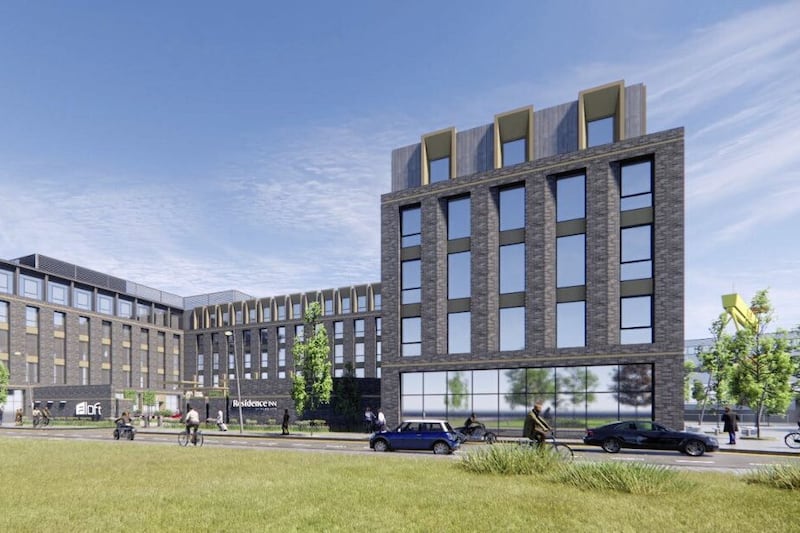IN October 2005, I was lucky to be in the old Titanic drawing office to hear visionary American architect Eric R Kuhne set out his vision for what has become Titanic Quarter in Belfast. To this day, it was the best, most inspirational presentation I have ever seen.
Kuhne started with his jacket on in front of the stage and he told a funny story about his work on Darling Harbor in Sydney. When he finished that, he took his jacket off, sat down beside his overhead projector and the lights went down and he traced, with a marker and a set of acetates, the philosophy, context, and design of a new piece of city for Belfast. It was more of a performance than a presentation.
One of the first distinctions he made was the difference between civic and public. In the development world we hear a lot about public realm, but Kuhne made the point that public realm only becomes civic if the citizens adopt it and use it as their own. His presentation interwove history, anthropology and philosophy and it led the packed room on a journey towards the inescapable conclusion that Kuhne’s master plan for the 185 acres of former industrial lands had to be right and indeed, that it was the one which would be adopted by the citizens of Belfast. He wove a spell that day which I am still influenced by, nearly 20 years later.

That day, Kuhne also sketched his initial design for Titanic Belfast. He drew the three hulls of the Titanic, Olympic and Britannic and that sketch became the guiding drawing for the building we have today. Kuhne couldn’t have known it then, but the success of Titanic Belfast, which is owned and overseen by a charity, the Maritime Belfast Trust (www.maritimebelfast.com), created the impetus and some of the cash for the restoration of the run-down drawing office he sat in that day to become the Titanic Hotel; for the roads and paths nearby to become the Maritime mile, the restoration of the Great Light at the end of the Titanic slipways and a range of other excellent projects which have transpired, thanks to the Trust, Belfast Barbour Commissioners, Titanic Quarter Ltd, Belfast City Council and a range of Executive departments in the intervening period. Leading me to be on the 14th floor of one of Belfast’s most impressive new office buildings, City Quays III, last month for the launch of a new framework for the future development of the ‘Belfast Waterfront Promenade’.
This new framework which is currently out for consultation (www.yoursay.belfastcity.gov.uk), was commissioned and paid for by the Waterfront Task Group, chaired by the chief executive of Belfast City Council John Walsh and including all the stakeholders listed above plus Tourism Northern Ireland. Take 15 minutes of your time and have a read at it, it’s a visionary piece of work and if some of the key ideas get delivered, like the new pedestrian and cycle bridge from Sailortown to Abercorn basin, then Kuhne’s vision for civic use of public infrastructure will continue to be realised in brilliant new ways for Belfast and its people.
Kuhne was a Texan living in London, whereas this new framework has been developed by a German living in Copenhagen, Oliver Schulze. His firm, Schulze & Grassov, spent six months last year assessing Belfast’s relationship with its river and its waterfronts. The study area is large and there is plenty in the report, but I will briefly focus on some of its key projects.
The new bridge which Schulze has called the Harbour Loop connects Titanic Quarter to north Belfast and would be a swing bridge which would open and close to allow boat access to the marina in Abercorn basin. In his excellent presentation on the day of the launch, Shulze showed the audience some beautiful examples of similar bridges in Copenhagen.
The cynics out there may say it will never happen, but the plans are building, and the money has requested, including from the Irish government’s Shared Island fund. I hope to be celebrating its opening in this column in less than five years. You read it here in The Irish News first.
Other exciting projects include the activation of the areas under the bridges and the ‘silencing’ of the noise from the bridges themselves; improving the walkways along the Thompson and Alexandra docks with the creation of a linear park and kick start of the Waterfront vision with a programme of temporary commercial opportunities and events along with ecological restoration of the river.
Like all big visions, the delivery requires collaboration across the city, but the building blocks are there, and money should be available. And like Eric Kuhne, Oliver Schulze has the experience and the talent to help deliver it. So, how’s that for a positive start to 2024? Happy new year, all.
:: Paul McErlean is founder and managing director of MCE Public Relations








